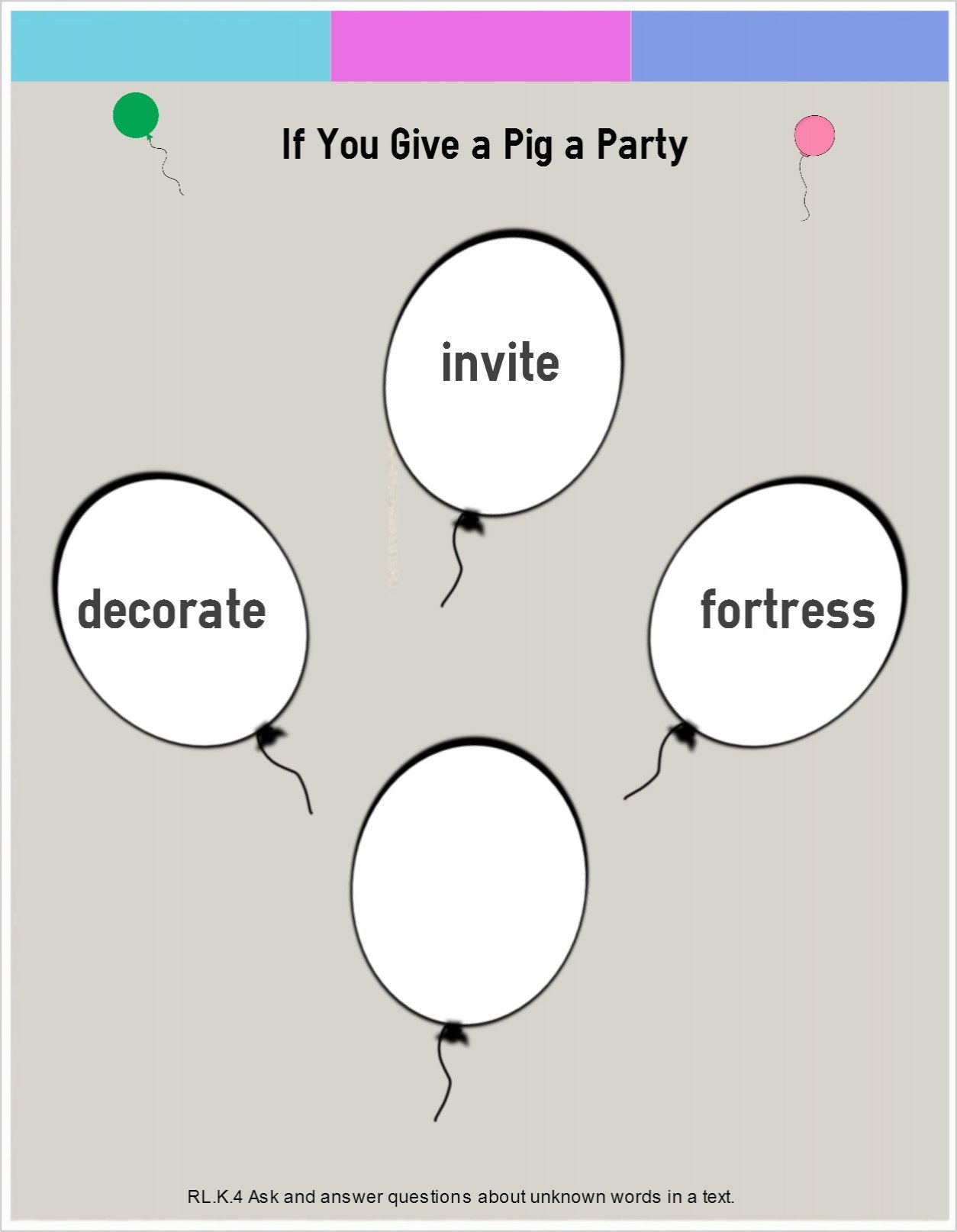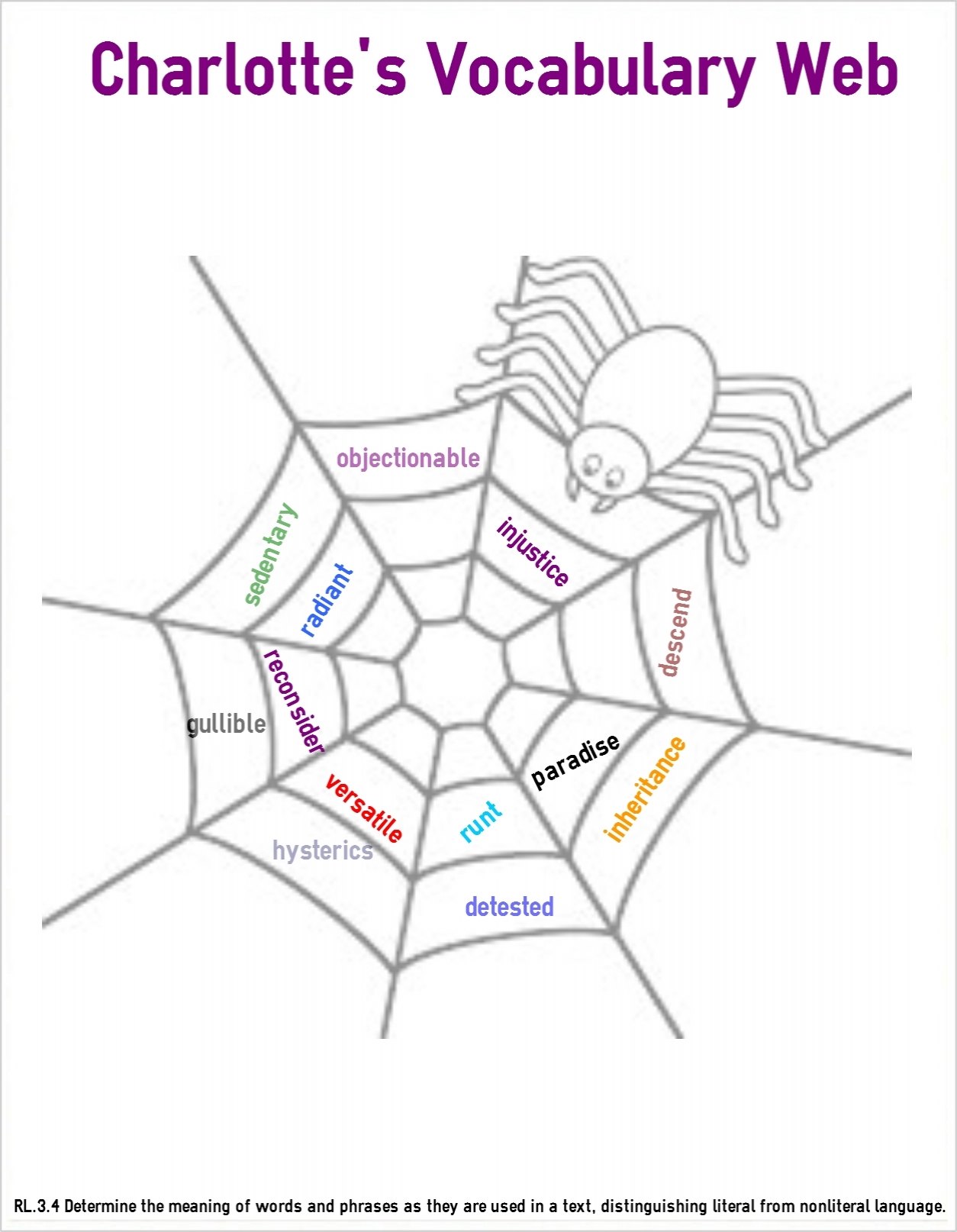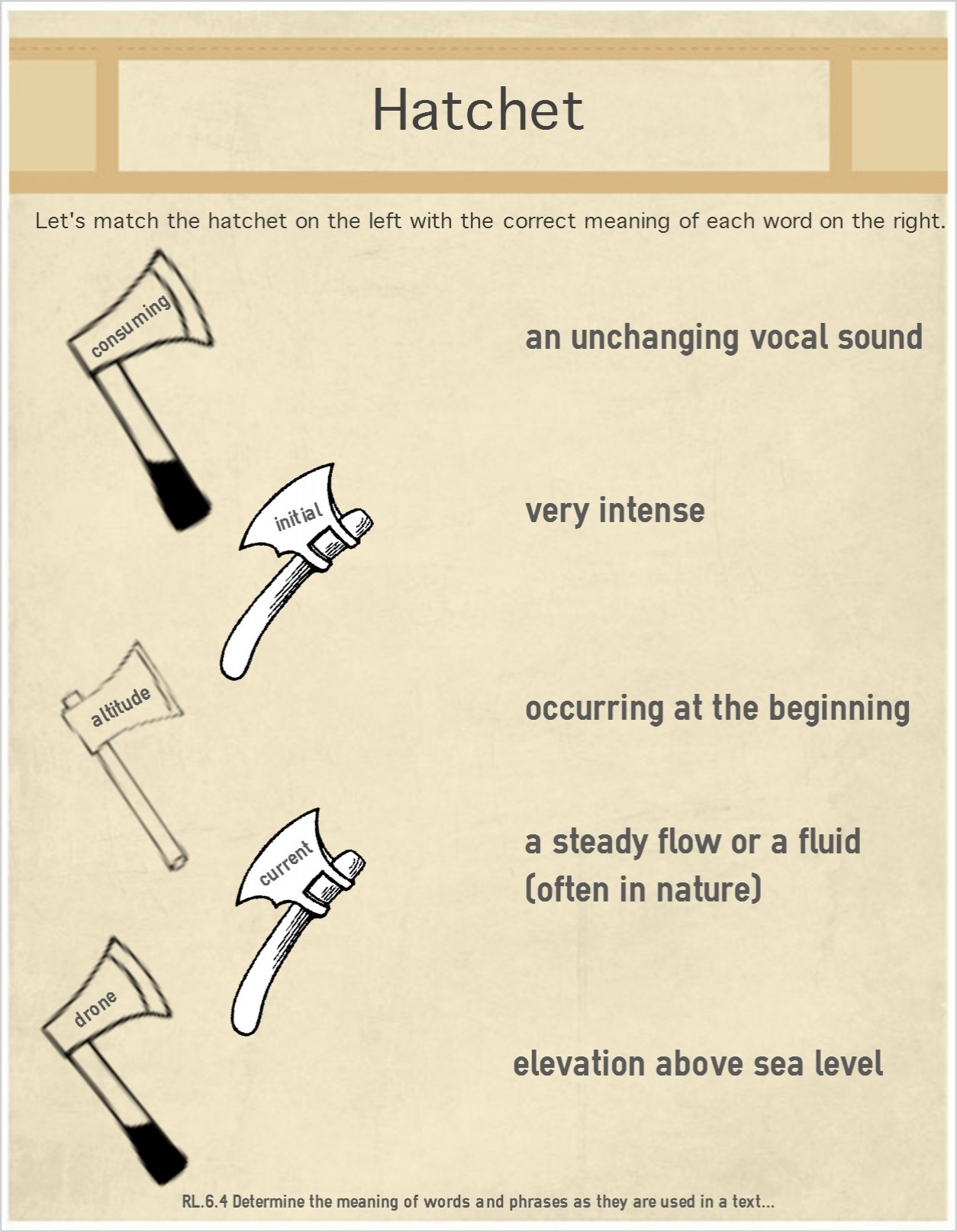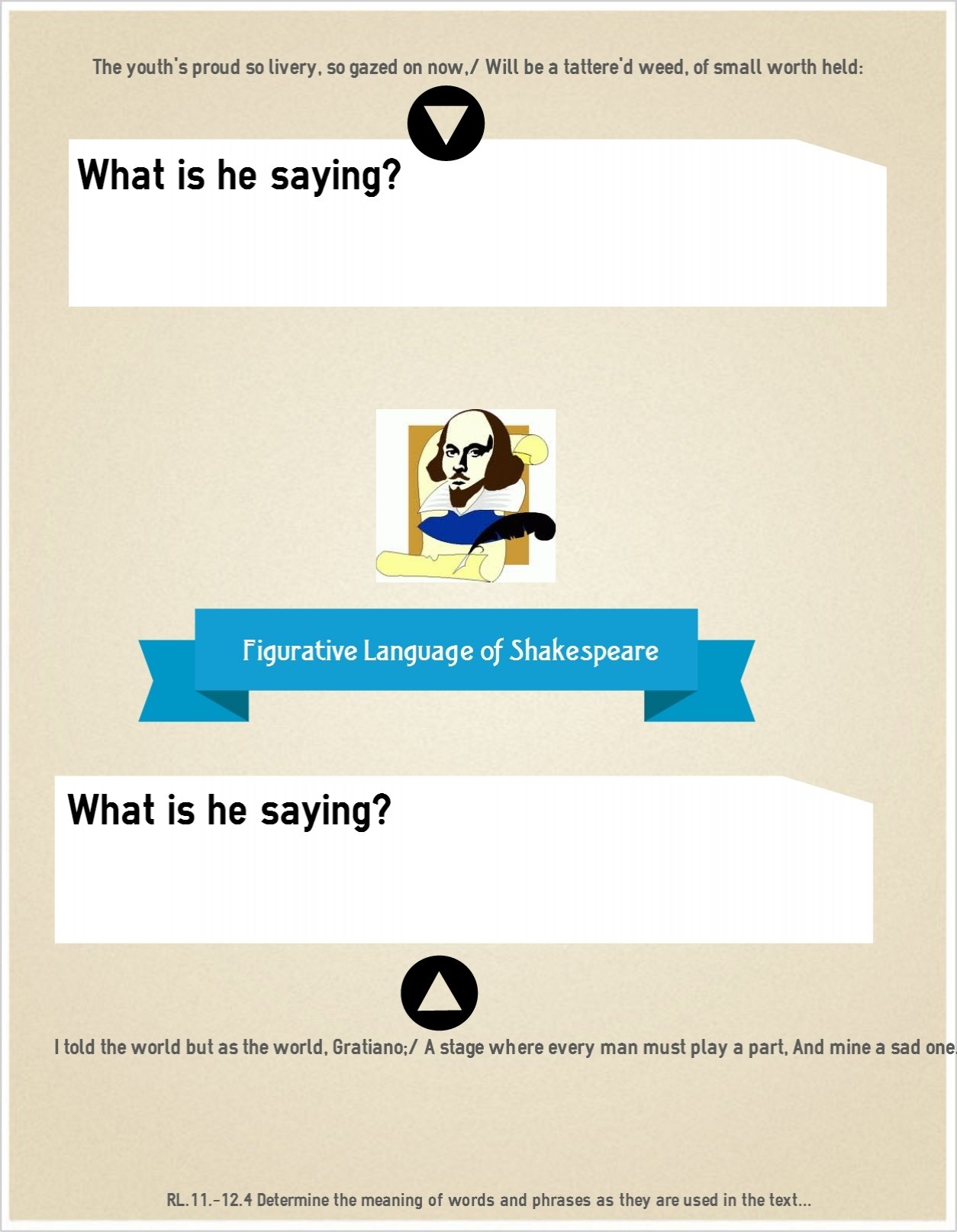This week, we will begin exploring how craft and structure are important to literary texts. Within the world of literature, students can see how authors make specific choices to create organization and meaning within their compositions. The first standard related to this section of the Common Core is Standard 4.
Perhaps, a proper nickname for this standard would be the “vocabulary standard”. Students are focused on identifying, assessing, and analyzing an author’s language. Through careful consideration of individual words and phrases, students as young as Kindergarten begin to develop context clues that allow them to make sense of strange or unfamiliar words. While our focus is on the concept of vocabulary, as it relates to reading, it is very easy to see how developing mastery in Reading Standard 4 promotes proficiency in oral and written communication skills too.
Enough introductions, let’s take a look at how the Reading Literature Standard 4 looks for primary students:
Kindergarten – 2nd grade teachers:
- CCSS.ELA-Literacy.RL.K.4 Kindergarten: Ask and answer questions about unknown words in a text.
- CCSS.ELA-Literacy.RL.1.4: Identify words and phrases in stories or poems that suggest feelings or appeal to the senses.
- CCSS.ELA-Literacy.RL.2.4: Describe how words and phrases (e.g., regular beats, alliteration, rhymes, repeated lines) supply rhythm and meaning in a story, poem, or song.
Laura Numroff’s If You Give… series is a great hit with primary-aged students. This fun vheme will allow Kindergarten students to explore some potentially difficult words in If You Give a Pig a Party.

Other extension ideas related to this picture book:
- Work with students to create a vheme related to “If you give a Kindergarten student, a __________….
3rd – 5th grade teachers:
As students exit the lower primary grades, they surpass the simple challenges of recognizing unfamiliar words and are asked to apply the usage of these words within a text to obtain meaning. This meaning is obtained using prefixes, suffixes, and context clues. Building these skills promotes academic excellence in the following standards:
- CCSS.ELA-Literacy.RL.3.4 – Determine the meaning of words and phrases as they are used in a text, distinguishing literal from nonliteral language.
- CCSS.ELA-Literacy.RL.4.4 – Determine the meaning of words and phrases as they are used in a text, including those that allude to significant characters found in mythology (e.g., Herculean).
- CCSS.ELA-Literacy.RL.5.4 – Determine the meaning of words and phrases as they are used in a text, including figurative language such as metaphors and similes.
E. B. White created a beloved story that explores the celebration of life and a little girl’s inspiring relationship with animals in Charlotte’s Web. This interactive organizer allows students to revisit some challenging vocabulary. Students can choose words from the web to explore more in depth from this vheme that is available below.

Other extension ideas related to this chapter book:
- Create a vheme on Easelly to illustrate synonyms and antonyms for one of the words on the original Charlotte’s Vocabulary Web.
6th – 8th grade teachers:
Teaching students to differentiate between casual conversation, texting lingo, and academic vocabulary doesn’t have to be the equivalent of dictionaries and thesauri. Clearly, middle school students require an ability to see how personal experiences and a story’s elements contribute to the author’s personal voice and tone. Teaching the following standards is vital to preparing students for communicating in a variety of styles and purposes that create one’s craft and structure:
- CCSS.ELA-Literacy.RL.6.4 – Determine the meaning of words and phrases as they are used in a text, including figurative and connotative meanings; analyze the impact of a specific word choice on meaning and tone
- CCSS.ELA-Literacy.RL.7.4 – Determine the meaning of words and phrases as they are used in a text, including figurative and connotative meanings; analyze the impact of rhymes and other repetitions of sounds (e.g., alliteration) on a specific verse or stanza of a poem or section of a story or drama.
- CCSS.ELA-Literacy.RL.8.4 – Determine the meaning of words and phrases as they are used in a text, including figurative and connotative meanings; analyze the impact of specific word choices on meaning and tone, including analogies or allusions to other texts.
The exploration of Brian Robeson’s adventure in Hatchet is one of adventure, discovery, and fear. There are a number of vocabulary words that emerge as early as the opening chapter that make this book potentially difficult for students to fully enjoy and comprehend. Use this creative vheme, which can be found below to formatively evaluate students’ understanding of the vocabulary words from Chapter 1.

Other extension ideas related to this chapter book:
- Have students select five additional vocabulary words from chapter 1. They can create a vheme to show the words and their meanings.
9th – 12th grade teachers
By high school, average students have a vocabulary in excess of 10,000 words. Clearly, that provides these adolescents with a lot of different choices for expressing themselves. Nonetheless, relating their own communication patterns with the authors of classic and modern literature can be a bit more difficult. Consequently, providing direct instruction, formative assessments, and summative assessments related to vocabulary instruction creates even more skill for the emerging adult.
- CCSS.ELA-Literacy.RL.9-10.4 – Determine the meaning of words and phrases as they are used in the text, including figurative and connotative meanings; analyze the cumulative impact of specific word choices on meaning and tone (e.g., how the language evokes a sense of time and place; how it sets a formal or informal tone).
- CCSS.ELA-Literacy.RL.11-12.4 – Determine the meaning of words and phrases as they are used in the text, including figurative and connotative meanings; analyze the impact of specific word choices on meaning and tone, including words with multiple meanings or language that is particularly fresh, engaging, or beautiful. (Include Shakespeare as well as other authors.)
The language of William Shakespeare is overwhelming for today’s students. Encourage them to explore some of the figurative language used by this classical author with the vheme found below.

Other extension ideas related to this picture book:
- Challenge students to brainstorm a list of 5 to 10 words that have different connotative and denotative meanings. From this list, students can create a brainstorm that shows how the dictionary definition of words is not always the one that our audience walks away with.
That’s a Wrap!
Dictionaries, thesauri, and vocabulary cards may have not completely lost their place in vocabulary instruction; yet, students need authentic interactions with written compositions to truly understand the impact of one’s word choice. This week’s journey led us from the silly, poetic expressions of Shel Silverstein to the beautiful and classic language from William Shakespeare. Next week, we will exchange the whimsical, literary language found in fictional texts for the technically savvy vocabulary employed by nonfiction authors, as we explore the Reading Information Standard 4.